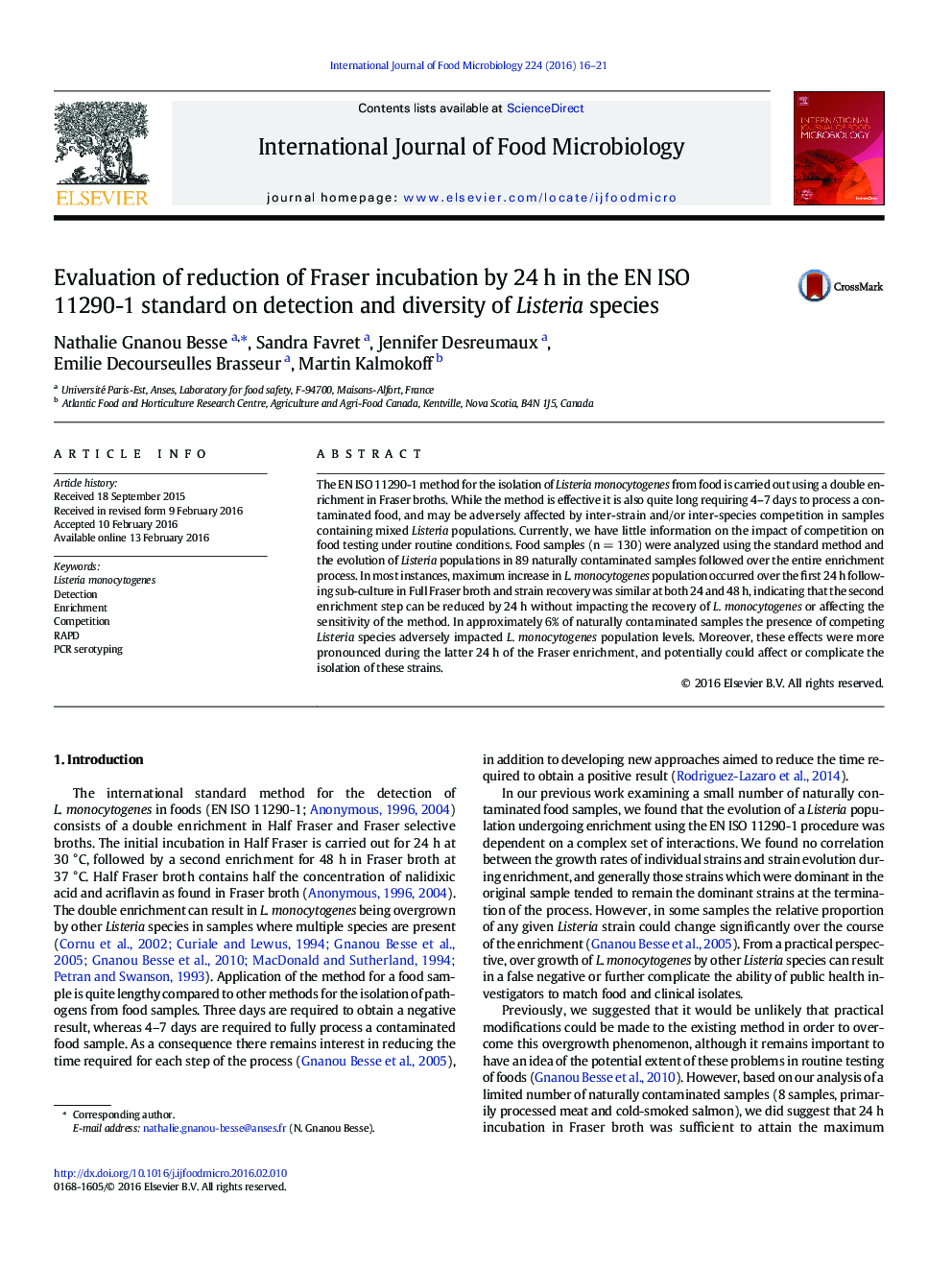| Article ID | Journal | Published Year | Pages | File Type |
|---|---|---|---|---|
| 4366276 | International Journal of Food Microbiology | 2016 | 6 Pages |
•Listeria evolution in food was followed over enrichment of standard detection method.•Second enrichment step can be reduced by 24 h without affecting method sensitivity.•Presence of competing Listeria species adversely impacted L. monocytogenes numbers.•Isolation following the 24 h incubation in Half Fraser also allowed for good recovery.•L. monocytogenes PCR serogroup IIa was the most common.
The EN ISO 11290-1 method for the isolation of Listeria monocytogenes from food is carried out using a double enrichment in Fraser broths. While the method is effective it is also quite long requiring 4–7 days to process a contaminated food, and may be adversely affected by inter-strain and/or inter-species competition in samples containing mixed Listeria populations. Currently, we have little information on the impact of competition on food testing under routine conditions. Food samples (n = 130) were analyzed using the standard method and the evolution of Listeria populations in 89 naturally contaminated samples followed over the entire enrichment process. In most instances, maximum increase in L. monocytogenes population occurred over the first 24 h following sub-culture in Full Fraser broth and strain recovery was similar at both 24 and 48 h, indicating that the second enrichment step can be reduced by 24 h without impacting the recovery of L. monocytogenes or affecting the sensitivity of the method. In approximately 6% of naturally contaminated samples the presence of competing Listeria species adversely impacted L. monocytogenes population levels. Moreover, these effects were more pronounced during the latter 24 h of the Fraser enrichment, and potentially could affect or complicate the isolation of these strains.
